COMMERCIAL CONSTRUCTION TRENDS
Propane-powered commercial appliances make designing the high school of the future possible today—even in the most challenging project parameters.
Andes Central High School: A Standout Student Facility
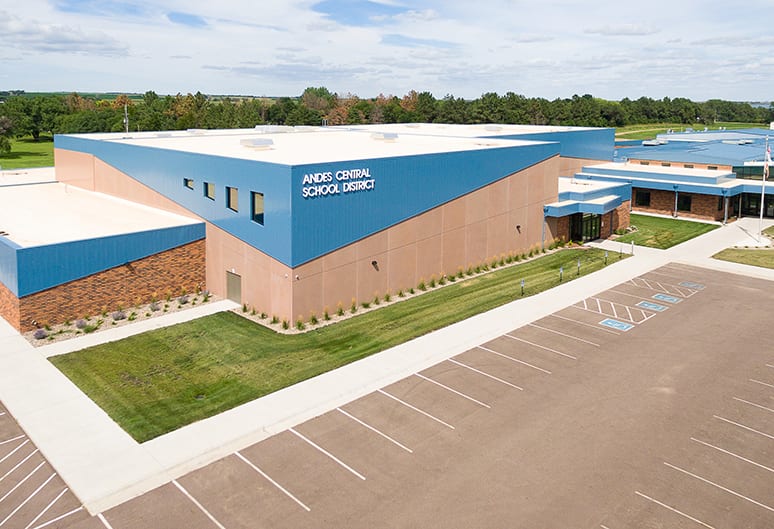
When you’ve got an aging, landlocked school in a rural South Dakota community with limited energy infrastructure, how do you discourage students from transferring to newer facilities in surrounding districts? For Andes Central District superintendent Debera Lucas, the answer was to build an addition on to the existing elementary and middle school that would unite the district’s 350 students into a comfortable space that could grow with the student body—within the district’s modest budget.
“We fully intend this building to be here for many, many years, and we want it to be as efficient and clean as we can, not only for the students but the community,” Lucas says. With that goal in mind, Lucas turned to architecture and engineering firm TSP, Sioux Falls-based architect Chase Kramer, and mechanical engineer Roger Nikolas. With space, budget, and infrastructure working against them, the team relied on propane appliances to ensure that the school would be as sustainable as it would be flexible.
Building Sustainably with Propane
The design team had ambitious sustainability goals for the building, targeting LEED-level values for the building shell, glazing, and insulation, as well as continuous insulation and window U-values that surpass energy code requirements. As a small agricultural community, Andes Central had no access to natural gas for heating. Initially, Nikolas considered geothermal heating, but found the upfront cost to be prohibitive. “That would have forced them into constructing less building, less classrooms—giving up something else if they had that geothermal system,” he said.
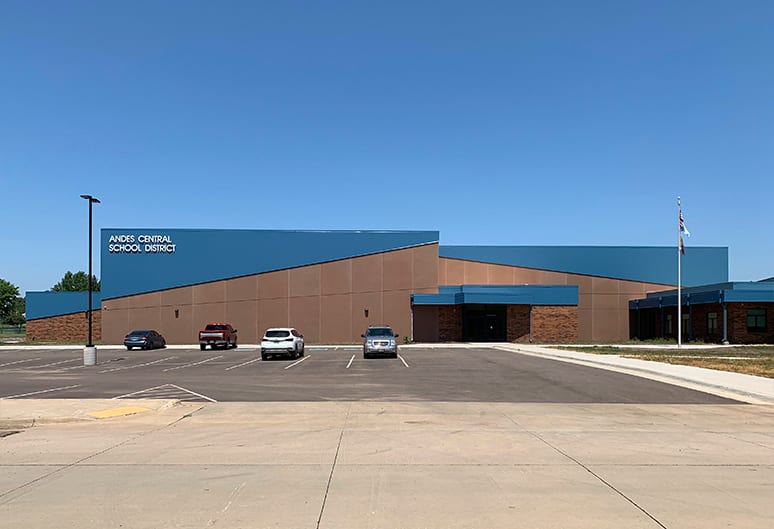

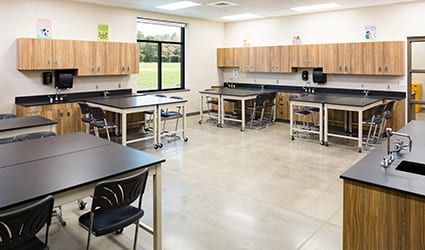
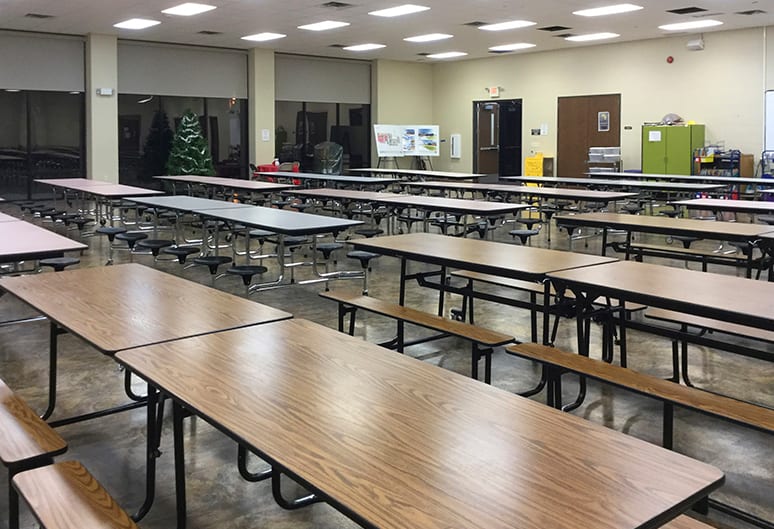
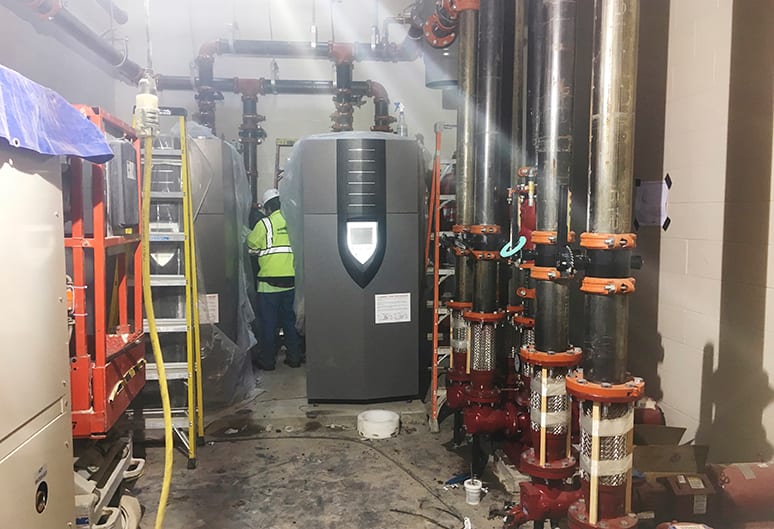
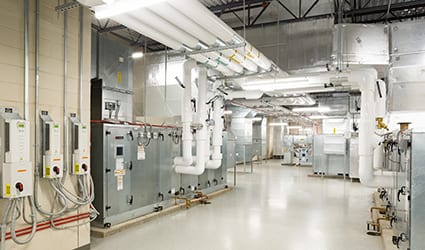
Instead, Nikolas turned to propane-fired boilers. Propane boilers offer value to commercial buildings like Andes Central High School by serving both space heating and hot water applications with high efficiency levels, reliable systems, and versatile designs. Two condensing Lochinvar Crest propane boilers with 2,500 MBH (thousands of Btu/hour) input generate a 25:1 turndown ratio to heat the new school, feeding a number of heating systems throughout the school.
When the design team looked at water heating, electric was quickly taken off the table. Not only would the energy costs for electric water heaters have been unaffordable, but the school may have even required an upgrade to their electrical service — at an additional infrastructure cost. Propane storage tank water heaters however, are versatile, proven, efficient, and dependable, a great solution for many commercial applications like Andes Central High School. The design team specified two condensing 95 percent efficient PVI Conquest units. These compact propane water heaters are rated to produce 291 gallons of hot water per hour at 100-degree rise.
A new centralized cafeteria allowed elementary, middle, and high school students to be served by a single kitchen. A high-capacity commercial propane stove keep the warm meals coming. Propane cooking equipment delivers professional-grade performance while decreasing fuel consumption and providing convenience and functionality in any commercial kitchen—especially one serving hundreds of hungry students a day. “From both a cost and a performance perspective, most cooks prefer gas over electricity,” Nikolas says.
Specifying with commercial propane appliances allowed the project team for Andes Central High School to allocate more budget to classrooms and facilities—without sacrificing performance, comfort, or sustainability. Despite the challenging conditions for this expansion, the high school has emerged as a beautiful and sustainable project that the community can be proud of for years to come.